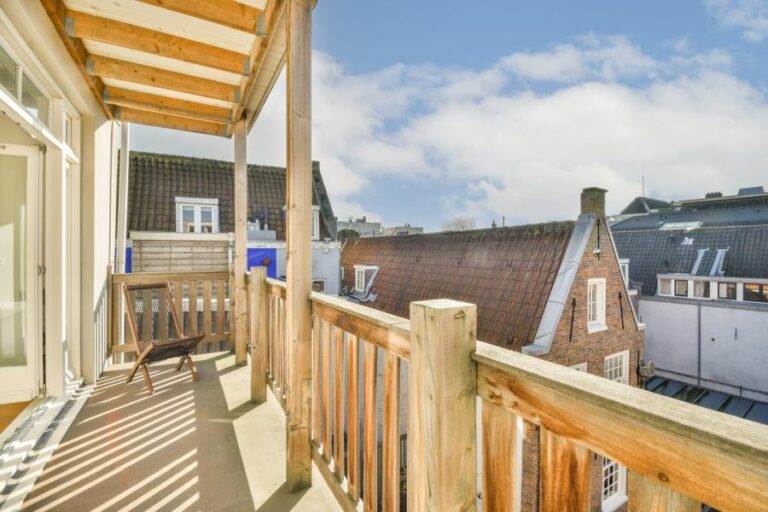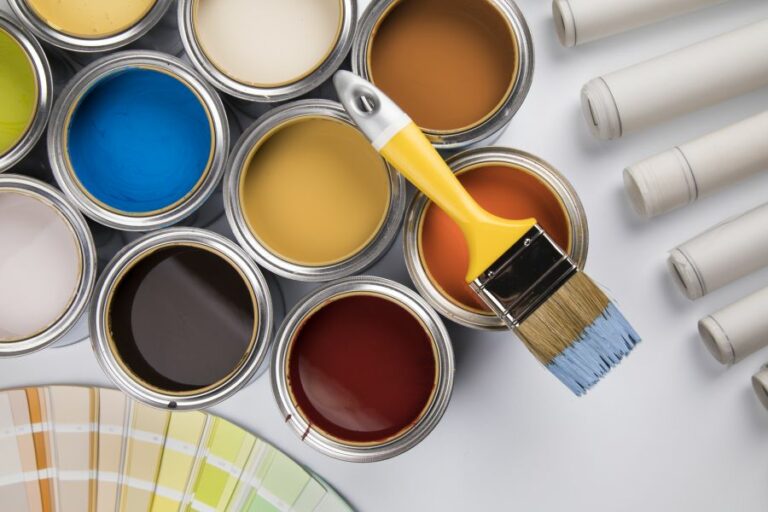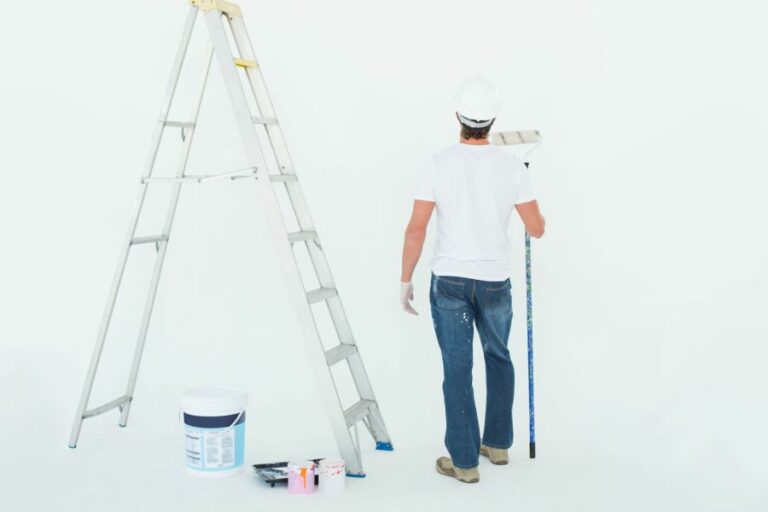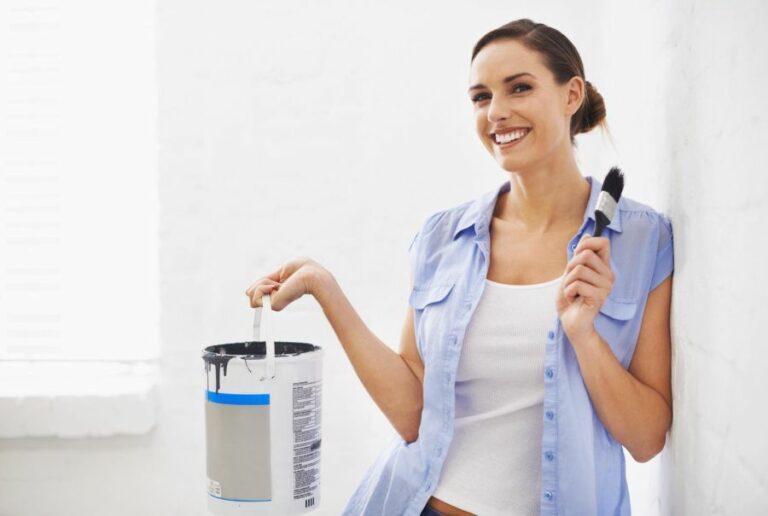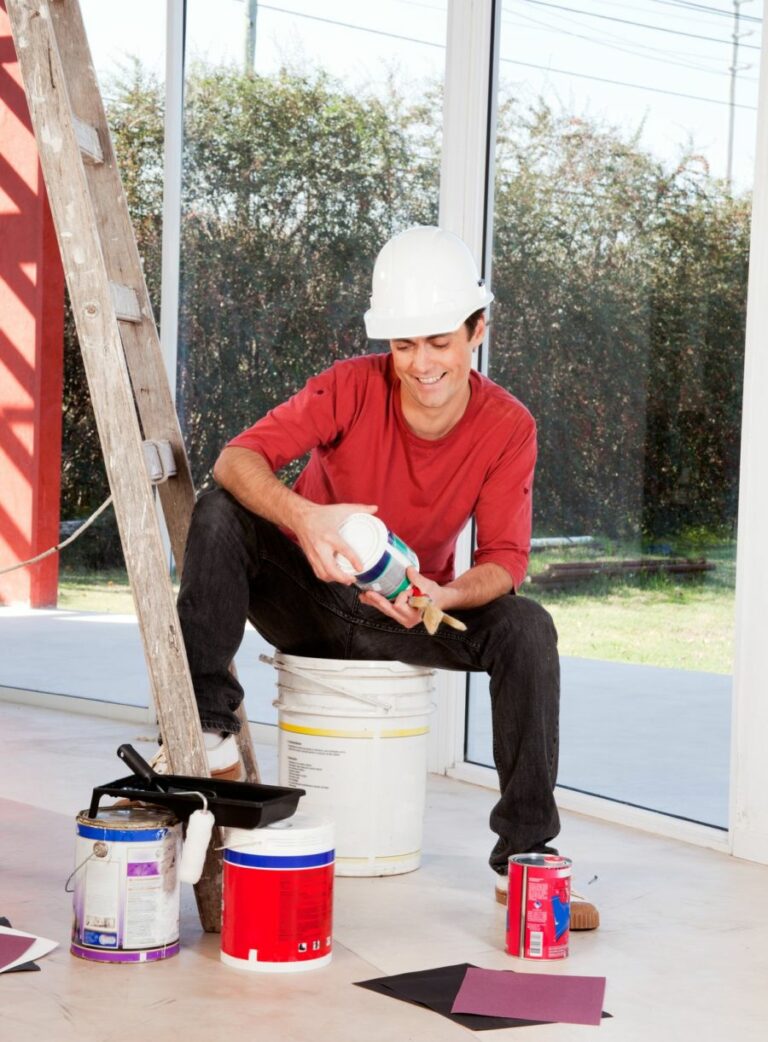Gray Outdoor Paint Colors, 25 Things You Should Know
Are you planning to give your outdoor space a fresh new look? Choosing the perfect grey outdoor paint colors can transform your home’s exterior and elevate its aesthetics. We understand that selecting the right hue can be daunting, but don’t worry! We’re here to guide you through the process and ensure you find the perfect shade that matches your personal taste and your home’s style.
Gray outdoor paint colors:
Gray outdoor paint colors are popular for their versatility, timeless appeal, and complementarity with various architectural styles and accent colors. Popular shades include light greys like Benjamin Moore Classic Gray, medium greys like Sherwin Williams Dorian Gray, and dark greys like Farrow & Ball Down Pipe. Tips for choosing the right grey include considering your home’s style, testing samples, coordinating accents, and evaluating the surrounding environment.

Ready to transform your exterior space with trendy grey outdoor paint colors? Delve into a world of varying shades, discover their unique effects, and learn how to elevate your home’s curb appeal! Read on and unlock the potential of grey as we guide you through the must-know color combinations.
Contents
- 1 Neutral Grey Exterior Paint Colors
- 2 What is the Most Widely Preferred Grey Paint Color for Exterior Surfaces?
- 3 Is Grey an Appropriate Exterior Color for a House?
- 4 Determining the Optimal Shade of Grey for Exterior Walls
- 5 What Colors Complement Grey in an Outdoor Setting?
- 5.1 • Brightening Grey with White Accents
- 5.2 • Make a Statement with Black Details
- 5.3 • Introducing Colorful Accents for a Pop of Personality
- 5.4 • Warming Up Grey with Natural Wood Tones
- 5.5 • Boosting Curb Appeal with Green Landscaping
- 5.6 • Finding the Perfect Color Balance
- 5.7 • Go Forth and Beautify Your Grey Outdoors
- 6 Determining the Most Suitable Shade of Grey: A Comparative Analysis
Neutral Grey Exterior Paint Colors
When it comes to selecting a paint color for your home’s exterior, grey is an increasingly popular choice for many homeowners. Grey outdoor paint colors offer a range of versatile, neutral shades that can work in nearly any architectural style, from traditional to modern.
• Benefits of Grey Outdoor Paint Colors
Grey is a neutral color, which means it can complement a wide range of other colors without clashing. Grey outdoor paint colors can provide a sleek, modern look or a cozy, traditional feel depending on the specific shade and accompanying accents.
Here are some benefits of choosing grey for your exterior paint:
– Timeless Appeal
Grey is a classic, timeless color that will never go out of style. This means that repainting your home in a grey hue can be a wise investment, as you won’t have to worry about your color choice looking dated in a few years.
– Versatility
One of the most notable advantages of grey outdoor paint colors is their versatility. Grey can work well with a range of architectural styles, from traditional to contemporary. Additionally, grey paint can provide a soft, muted background for landscaping and other outdoor elements.
– Complementary
Grey can act as an excellent backdrop for other colors, allowing accent colors and landscaping to stand out. By choosing a grey outdoor paint color, you can more easily incorporate a variety of accent colors into your exterior design.
• Popular Shades of Grey Outdoor Paint Colors
With countless shades of grey available, finding the perfect hue for your home’s exterior can seem overwhelming. To make this process easier, we’ve compiled a list of popular grey outdoor paint colors to consider:
– Light Grey
Light grey paint colors are an excellent choice for homes with a more traditional architectural style. Common shades of light grey include:
- Benjamin Moore Classic Gray: A soft, warm grey with a slight beige undertone.
- Sherwin Williams Agreeable Gray: A light grey paint color with the perfect balance of warm and cool undertones.
- Farrow & Ball Skimming Stone: A classic, elegant light grey with a warm, stony hue.
– Medium Grey
Medium grey paint colors offer greater depth than light grey while still maintaining a neutral, versatile look. Some popular medium grey outdoor paint colors include:
- Benjamin Moore Stonington Gray: A cool, crisp medium grey with blue undertones.
- Sherwin Williams Dorian Gray: A medium-toned grey with warm, greige undertones.
- Behr Drizzle Gray: A mid-tone grey with a soft, muted appearance.
– Dark Grey
Dark grey paint colors can create a striking, bold effect on your home’s exterior. They are especially well-suited for modern and contemporary homes. Some popular dark grey outdoor paint colors are:
- Benjamin Moore Kendall Charcoal: A rich, deep grey with warm undertones.
- Farrow & Ball Down Pipe: A dramatic, dark grey with a hint of blue-green undertones.
- Sherwin Williams Iron Ore: A deep, moody grey with a slightly brownish hue.
• Tips for Selecting the Right Grey Outdoor Paint Color
Before you decide on a specific shade of grey, consider the following tips to help you select the perfect hue for your home’s exterior:
– Consider Your Home’s Architectural Style
When choosing a grey outdoor paint color, keep your home’s architectural style in mind. Light greys tend to work best with traditional homes, while medium and dark greys often pair well with modern and contemporary styles.
– Test Paint Samples
Before committing to a specific grey outdoor paint color, purchase samples and test them on your home’s exterior. This will allow you to see how the color looks in various lighting situations and how it complements your home’s other exterior elements.
– Coordinate with Accents
Think about the other colors present in your home’s exterior design, such as your roofing, trim, and other accents. Choose a grey paint color that will complement these elements and create a cohesive look.
– Consider the Surrounding Environment
Take note of the natural environment and landscape surrounding your home. Choose a grey outdoor paint color that will work well with these elements and enhance your home’s overall appearance.
In conclusion, grey outdoor paint colors offer an excellent range of options for homeowners looking to update their home’s exterior.
By considering your home’s architectural style, testing samples, and coordinating with existing accents, you can find the perfect grey hue to create a stunning, timeless look for your home.
What is the Most Widely Preferred Grey Paint Color for Exterior Surfaces?
The realm of exterior paint colors is vast, with various shades and tints vying for the title of “most popular.” Grey is a top contender when it comes to popularity, as it is a timeless, neutral color that goes with nearly any architectural style.
• The Power of Grey: Versatility and Elegance
Before diving into specific shades, it’s crucial to understand the appeal of grey as an exterior paint color. From classic to contemporary designs, grey paint lends a refined and elegant touch. Its versatility is unmatched, as it pairs beautifully with various trims, accents, and materials.
A grey exterior paint opens the door for more vibrant or subdued accent colors, unlike other bolder hues that may not offer the same flexibility.
– Subtle Neutrals: A Soothing Touch
When looking for a popular exterior grey paint color, keep in mind that there are a variety of tones and shades to consider. Subtle, neutral greys have gained popularity due to their calming and soothing effect on a home. Among these shades, two stand out in particular:
- Benjamin Moore’s Revere Pewter: A warm, almost-hazel grey, this color is ideal for traditional styles and works exceptionally well with red brick and other warm accents. It has a comforting aesthetic that is perfect for those looking for an inviting feel. Curb Appeal by Benjamin Moore offers additional color recommendations for exterior greys.
- Sherwin Williams’ Repose Grey: A slightly cooler grey, tinged with a hint of blue, this shade has become a go-to for homeowners looking for a modern touch. It pairs well with crisp white trim, and can be complemented easily with a pop of color on the front door or with landscaping.
– Dark and Moody: A Dramatic Statement
If you’re looking for a more striking exterior paint color, many homeowners gravitate towards darker shades of grey. A few notable options include:
- Farrow & Ball’s Down Pipe: Dark and moody, this British paint company’s grey carries an almost-black tone, contrasted with hints of blue and green. It’s an excellent choice for those seeking a bold and dramatic statement on their home’s exterior, and it pairs well with white trim and black window frames.
- Behr’s Iron Mountain: This extremely dark grey has a brownish tone that brings warmth to the color, making it a popular choice for those interested in dark exterior paint without opting for a pitch-black hue. It pairs especially well with wooden accents and natural stonework.
Both of these options make a strong visual impact, giving your home a striking presence.
– The Modern Classic: The Most Popular Choice
Amidst the multitude of grey paint colors, one particular shade stands out as the most popular exterior grey paint color:
Sherwin Williams’ Agreeable Grey
This warm yet light grey paint strikes the perfect balance between classic and modern. Its adaptability is unparalleled; it complements various architectural styles, trims, and accents. This versatile color can effortlessly transform the appearance of your home without overpowering other features.
It is this harmonious harmony between modernity and timelessness that makes Sherwin Williams’ Agreeable Grey the reigning champion amongst exterior grey paint colors. Learn more about this fantastic color and other popular shades at Sherwin Williams’ Exterior Colors.
• Making the Decision: Factors to Consider
While Agreeable Grey is undoubtedly a popular and versatile choice, it’s essential to keep in mind that the right shade of grey for your home may be different.
Consider factors such as your home’s architectural style, surrounding environment, and personal preferences before deciding on a specific shade. Consulting with a local, professional painter can provide additional insight into which paint colors will work best for your home.
In conclusion, grey is a timeless and elegant color choice for a home’s exterior that offers countless shades to cater to various styles and preferences.
Sherwin Williams’ Agreeable Grey stands out as the most popular exterior grey paint color, but other tones such as Revere Pewter, Repose Grey, Down Pipe, or Iron Mountain may be more suitable for your specific needs.
Ultimately, let your home’s architecture guide you, ensuring your chosen grey hue complements your home’s unique features and surrounding environment.
Is Grey an Appropriate Exterior Color for a House?
Grey is a popular color choice for the exterior of a house, owing to its timeless appeal, versatility, and adaptability.
• The Appeal of Grey as an Exterior House Color
– Timeless and Versatile
Grey is often considered a neutral hue that works well with various architectural styles and complements a wide range of exterior trims and accents. Because of its versatility, grey can create a minimalist and modern look or be used to add depth and character to a more traditional design.
Furthermore, grey is a timeless color, meaning it isn’t likely to appear dated or out of fashion in the coming years. Choosing grey as your exterior color will ensure your home remains visually appealing for an extended period.
– Adaptable to Different Surroundings
Grey has the advantage of blending seamlessly into the environment, no matter where your home is situated. If your house is surrounded by lush greenery, a grey exterior can provide an elegant backdrop for the natural colors. Conversely, in more urban settings, grey can add to the sophisticated atmosphere.
– Enhances Curb Appeal and Property Value
The exterior of a home plays a large role in creating its curb appeal and potentially increasing its property value. Grey is perceived as a universally appealing hue that has a broad market appeal, making it a safe and attractive option for potential home buyers.
• Choosing the Right Shade of Grey
One critical factor to consider when selecting the grey color for your house exterior is its undertone. Since there are various shades of grey with different undertones, here are some tips to help you find the perfect one for your home:
– Cool Undertones
Cooler shades of grey have a blue, green, or purple undertone, making them suitable for areas with ample sunlight. These shades can make your home appear inviting and balanced when paired with other cool-toned accents like blues, whites, and metallics.
Some popular cool greys to consider are:
- Silver Lake
- Coventry Gray
- Stormy Sky
- Stonington Gray
– Warm Undertones
Warm grey hues have a tan, beige, or taupe undertone and can create a cozy feel for your home exterior. These shades work well in environments with less sunlight, giving the house a warm and approachable appearance.
Some popular warm greys include:
- Repose Gray
- Agreeable Gray
- Mindful Gray
- Dovetail
• Combining Grey with Other Colors
The beauty of grey is that it pairs well with various other shades, allowing you to create a harmonious and visually appealing exterior. Here are some color ideas to consider when using grey for your home’s facade.
– Trim and Accents
In addition to choosing the right shade of grey for your exterior, you’ll need to consider complementary trim and accent colors. White and off-white tones can provide a classic and timeless look when paired with grey, while darker trims will create a sleek and modern appearance.
Some other popular accent colors to consider are:
- Blues
- Greens
- Dark Browns
- Metallics
– Natural Elements
If your home has brick or stone elements on its exterior, you’ll want to select a shade of grey that complements these materials. Be sure to test out various grey paint samples against the existing stone or brickwork to ensure the colors work well together.
• Grey Exterior Home Considerations
Grey, like any other color, can appear different under various lighting conditions, climates, and surrounding environments. It’s essential to consider how the grey color will interact with the environment in which your home is situated.
To avoid any unpleasant surprises, test your chosen paint color on various parts of your house’s exterior to see how it looks at different times of the day and under various light conditions.
In conclusion, grey is a superb color choice for the outside of your house, providing timeless appeal, versatility, and adaptability.
By choosing the right shade of grey, as well as complementary trim and accent colors, you can create a visually appealing and harmonious exterior that enhances both curb appeal and property value.
Determining the Optimal Shade of Grey for Exterior Walls
Selecting the right shade of grey for exterior walls is as important as choosing the right material for the paint job. Grey, being a versatile and neutral color, serves as an excellent canvas for various design elements and architectural styles.
It can blend well with other colors and textures, contributing to the overall visual appeal and value of a building.
• Consider the Location and Environment
The location and environment of a building play a significant role in determining the ideal shade of grey for exterior walls. The natural light conditions, surrounding landscape, and climate all have a bearing on how the color appears and performs.
Here are some general guidelines to help you make an informed decision.
– Coastal Areas
For buildings located close to the coast or in areas with a lot of natural light, lighter shades of grey are recommended. These shades prevent the space from appearing gloomy under the bright sun and blend well with the surroundings.
For instance, a cool, light grey with blue or green undertones harmonizes with the seaside landscape.
– Urban Settings
In urban environments, where buildings are closely packed or surrounded by other structures, mid-tone greys serve as a better option. They balance well with other colors and materials, create contrast, and add depth to architectural details.
Warmer grey tones can also help in providing an inviting and cozy feel to the space.
– Patterns of Sun and Shade
Observe how sunlight and shadows affect the appearance of greys throughout the day. Light greys may look washed out under direct sunlight, whereas dark greys can appear too heavy in the shade. Look for a grey that retains its brightness and depth under different light conditions.
– Climate Factors
Colder climates typically call for warmer greys with beige, brown, or other earthy undertones. These shades lend a cozy and comfortable feel to the exterior while merging well with the surroundings.
On the other hand, cooler greys with blue or green undertones are better suited for warmer climates, as they evoke a sense of calm and freshness.
• Architectural Style Matters
Your home’s architectural style also plays a crucial role in determining the best shade of grey for the exterior walls. Here are some grey shades suitable for different architectural styles.
– Modern and Minimalist
Modern and minimalist exteriors often feature clean lines and simple forms. Cool, dark greys with a monochromatic palette work best for these structures, emphasizing the sleek and contemporary look. A deeper charcoal grey can enhance the modern design aspects.
– Traditional and Classic
For traditional and classic architectural styles, warmer greys with beige, taupe, or cream undertones complement the existing characteristics. Lighter shades of grey, such as those with a slight blue tint, create a timeless and elegant appearance.
Mid-tone greys can also be used to emphasize specific features or details of a classic exterior.
– Historic and Vintage
Historic and vintage homes often carry a unique charm and character with intricate details and features. Greiges (grey + beige) and lighter warm greys can help highlight the textures and patterns on these structures.
Depending on the geographic location, a touch of grey with soft pastel undertones might blend perfectly, preserving the authenticity of the home.
• Work with the Surroundings
As part of a broader environment, the exterior walls of a building should ideally connect with the other elements in the surroundings, such as trees, plants, or neighboring structures. The color and hue of the grey can play a key role in setting the desired tone and character for the area.
A landscape of lush, green trees can be complemented with a light, cool grey, whereas a dense urban setting might work best with a mid-tone or dark grey, offering a contrast with the streetscape.
• Keep the Accent Colors in Mind
Grey, as a neutral background, provides ample opportunities for introducing accent colors that add visual interest and define various architectural features.
When selecting a shade of grey for exterior walls, visualize how various accent colors, such as white, black, red, or blue, would pair with it to create your desired look.
• Final Thoughts
To summarize, the best shade of grey for exterior walls depends on several factors, including location, architectural style, and environment. A general tip is to test your chosen color on a specific area of the wall and observe how it appears throughout the day under different lighting conditions.
Remember, the right shade of grey will not only enhance the aesthetic appeal of your building but also contribute to its durability and long-term value.
Grey Shade | Description |
|---|---|
Charcoal Grey | A dark shade of grey that adds boldness and sophistication to exterior walls. |
Slate Grey | A medium shade of grey that adds elegance and provides a neutral backdrop to your exterior landscape. |
Light Grey | A light shade of grey adds brightness and makes your exterior walls look more spacious. |
Pewter Grey | A subtle shade of grey with a touch of warmth, ideal for a modern yet inviting exterior wall. |
Repose Grey | A neutral, light to medium grey that works well on a variety of home styles and complements other exterior colors. |
What Colors Complement Grey in an Outdoor Setting?
Grey is a versatile and elegant color that has become increasingly popular for outdoor home exteriors. It is a timeless and sophisticated choice that can blend in harmoniously with its surroundings or create a striking contrast.
However, selecting the right color combinations to compliment grey outdoors can be a challenging task.
• Brightening Grey with White Accents
One of the easiest and most effective ways to enhance the beauty of the grey outdoors is by introducing white accents. White is a classic color choice that pairs wonderfully with grey, creating a crisp and clean aesthetic.
This combination is particularly effective for outdoor furniture, railings, window frames, and trim. The stark contrast between the two colors adds visual interest and helps to highlight the architectural features of your home.
• Make a Statement with Black Details
For those looking to make a bold statement, black is an excellent color to pair with grey outdoors. This combination creates a dramatic and sophisticated look, perfect for modern or minimalist designs.
Incorporating black elements, such as doors, shutters, and outdoor lighting fixtures, can add depth and dimension to a grey exterior. Additionally, black can also be an excellent choice for larger outdoor furniture pieces or statement-making patio umbrellas.
• Introducing Colorful Accents for a Pop of Personality
For a lively and playful touch, consider adding vibrant and colorful accents to your grey outdoor spaces. Colors such as yellow, turquoise, and coral can bring life and energy to an otherwise muted color palette.
Use these bright tones sparingly, focusing on smaller elements like cushions, planters, and decorative pieces.
• Warming Up Grey with Natural Wood Tones
Combining grey with warm wood tones can create a calming and organic outdoor environment. Natural wood tones, such as teak, cedar, and redwood, pair beautifully with grey and can add warmth and texture to your exterior design.
Using wooden elements, such as decking, pergolas, or outdoor furniture, can help balance the coolness of the grey with the rich warmth of the wood.
• Boosting Curb Appeal with Green Landscaping
Greenery is a natural complement to grey, and incorporating lush landscaping can significantly enhance the appeal of your outdoor spaces. Planting a variety of shrubs, trees, and flowers in shades of green can create a vibrant and refreshing contrast against the grey backdrop.
Additionally, adding potted plants or hanging baskets around your grey exterior can provide an added dose of color and life.
• Finding the Perfect Color Balance
When selecting colors to pair with your grey outdoor spaces, it is essential to consider the overall balance of your design. Visualize how the colors will interact with one another and keep in mind that it is vital not to overpower the grey but rather enhance and complement it.
As a rule of thumb, try to stick to a maximum of two to three accent colors to maintain harmony and cohesion in your outdoor design.
• Go Forth and Beautify Your Grey Outdoors
With the above color combination suggestions and resources, you are now equipped to elevate your grey outdoor spaces to a whole new level of style and sophistication. Explore the different color possibilities and, most importantly, have fun expressing your unique design vision, one color at a time.
Determining the Most Suitable Shade of Grey: A Comparative Analysis
The world of greys is vast and complex, offering a plethora of options that make the seemingly simple task of choosing the perfect shade an overwhelming endeavor. What’s the secret to success in this endeavor? It all boils down to understanding the reasons behind selecting that perfect shade of grey.
• The Impact of Undertones
When discussing shades of grey, often the conversation shifts to undertones. These subtle undertones differentiate one grey from another, playing a pivotal role in determining the right shade for your project.
– Cool Undertones
Cool undertones, mainly consisting of blue or green hues, create a serene and calming effect. They’re best utilized in spaces where you aim to create a peaceful and relaxing atmosphere. Examples include bedrooms and bathrooms, as their cool undertones evoke a sense of tranquility.
– Warm Undertones
On the opposite end of the spectrum, warm undertones embrace shades of brown, beige, or taupe. These undertones evoke a cozy and inviting atmosphere, perfect for spaces intended for gathering and socializing, such as living rooms and dining areas.
– Neutral Undertones
For those seeking the elusive “true grey,” neutral undertones are the way to go. These undertones refrain from leaning too far in either direction, bestowing a versatile shade that blends seamlessly with various color schemes and decor styles.
• The Influence of Lighting
Lighting plays a critical role in the appearance of a shade of grey and not just in terms of how bright or dark it appears. Different lighting sources can impact the undertones in your chosen grey, making them more or less prominent.
– Natural Light
The impact of natural light on your chosen shade of grey changes throughout the day. Morning light tends to possess a blue/cool undertone, whereas the evening light lends itself to a warmer, golden hue. Be sure to observe how your chosen shade responds to these transitions before committing.
– Artificial Light
The type of artificial light also plays a role. Incandescent lighting casts a warmer yellow hue, while fluorescent lighting skews towards cooler, blue undertones. Depending on your space’s primary source of light, this could sway your decision to select the most suitable shade of grey.
• Color Combinations
Another crucial factor when selecting the perfect shade of grey is the existing color palette within the space. Greys need to complement the existing tones, whether through contrasting or matching the overall color scheme.
Seemingly neutral shades of grey can either create a bold statement or effortlessly blend in with an accompaniment of colors.
• Recommendations from Experience
From my personal experience, here are four timeless shades of grey to consider:
- Benjamin Moore Revere Pewter (HC-172): A classic and versatile warm greige (grey and beige) boasting exceptional balance, perfect for various settings and styles.
- Sherwin-Williams Repose Gray (SW 7015): A subtle, light grey with warm undertones, lending itself to be an ideal backdrop in contemporary installations.
- Farrow & Ball Cornforth White (No. 228): Despite its name, this shade leans towards a cooler, mid-tone grey with a sophisticated and subtle nature.
- Behr Dolphin Fin (790C-3): An adaptable neutral grey that easily complements both warm and cool accents, making it an excellent choice for various spaces.
• Additional Resources
For further research and assistance in selecting the perfect shade of grey, I recommend visiting the Color Matters website. This non-commercial site provides valuable insights into color psychology, symbolism, and usage, empowering you with the knowledge to make the most informed decision.
• Conclusion
Ultimately, determining the “best” shade of grey for your specific needs depends on factors such as undertones, lighting, and overall color combinations. Trust your instincts, and do not be afraid to experiment with swatches and samples in your space.
With the knowledge and resources provided here, you are well on your way to selecting the ideal shade of grey for a successful and harmonious result.
Shade of Grey | Percentage |
|---|---|
Light Grey | 30% |
Medium Grey | 40% |
Dark Grey | 20% |
Very Dark Grey | 10% |

